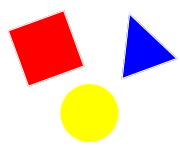The binary (aka Base 2) number system was invented by Gottfried Leibniz in 1679 and uses just two symbols for counting and expressing value.

Binary Symbols and Values
In the binary number system, the symbols 0 and 1 represent values zero to one. Binary values are usually represented by the subscript '2', subscript 'b', subscript 'B', preceding 'bin', preceding '% 'or preceding '0b'.
Binary Symbols Table
| Decimal Value | Binary Symbol | Possible Binary Value Representations |
|---|---|---|
| 0 | 0 | 02 or 0b or 0B or bin 0 or %0 or 0b0 |
| 1 | 1 | 12 or 1b or 1B or bin 1 or %1 or 0b1 |
Binary Digits
Similar to the base 10 system, the right most digit within a binary number is the least significant digit (LSD) and has the lowest place value. As further the digits move to the left, as higher the place value becomes. The right most digit within a binary number is the most significant digit (MSD) and has the highest place value.
Binary Place Values
| 7. Digit From Right | 6. Digit From Right | 5. Digit From Right | 4. Digit From Right | 3. Digit From Right | 2. Digit From Right | Right Most Digit | |
|---|---|---|---|---|---|---|---|
Power of 2 (2x): | 26 | 25 | 24 | 23 | 22 | 21 | 20 |
| Place Value: | 6410 | 3210 | 1610 | 810 | 410 | 210 | 110 |
Place values are shown in decimal (base 10) number system as this is the number system we are most familiar with.
Binary Number Line
Example of a number line displaying binary numbers from -102 to 11002 only:

The subscript '2' is not required as the number line is labelled 'Binary Number Line' and is omitted for clarity.
Binary Counting

Counting Bananas in Binary
In above image, let us count all the bananas in binary. We count as follows:
1 … That's it, there is just 12 banana in above image!
Counting Pears in Binary
Now let us count all the pears in binary. We count as follows:
1 … 10 … 11 … That's it, there are 112 pears in above image! Remember not to say eleven, as this would be the decimal pronunciation. Call the number digit by digit, e.g. one – one binary.
Counting Apples in Binary
We can also count all the apples in binary. We count as follows:
1 … 10 … 11 … 100 … 101 … 110 … 111 … 1000 … 1001 … 1010 … 1011 … 1100 … That's it, there are 11002 apples in above image! Again remember not to say one thousand and one hundred, as this would be the decimal pronunciation. Call the number digit by digit, e.g. one – one – zero – zero binary.
Counting All Pieces of Fruit in Binary
Finally we count all the pieces of fruit in binary, count as follows:
1 … 10 … 11 … 100 … 101 … 110 … 111 … 1000 … 1001 … 1010 … 1011 … 1100 … 1101 … 1110 … 1111 … 10000 … That's it, there are a total of 100002 pieces of fruit in above image! Don't say ten thousand, just call it e.g. one – zero – zero – zero – zero binary.
Binary Numbers in Computing
The internal working of almost every modern computing device is based on the binary number system. All CMOS and TTL logic gates operate on simple on or off states that can be noted as binary numbers.

